Viral Fashion At The Costume Museum Of Canada
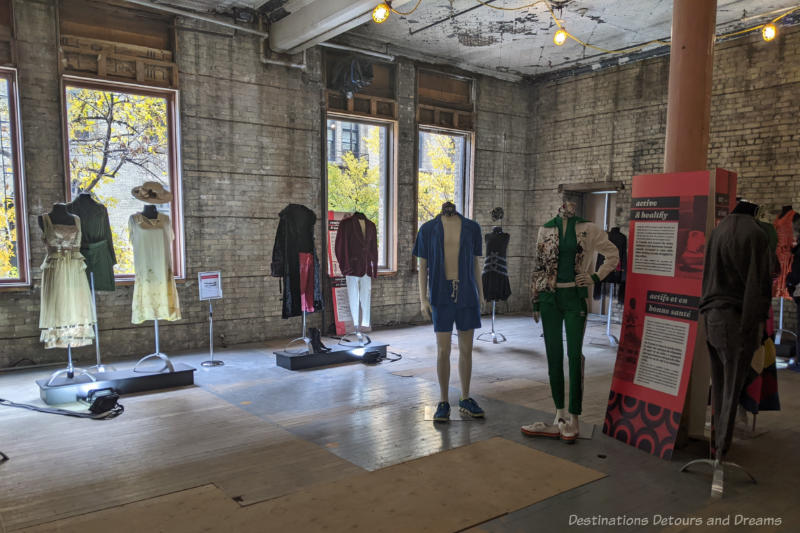
An exhibit in Winnipeg, Manitoba, Canada looks at fashion in the wake of the 1920s and 2020s pandemics
The Costume Museum of Canada’s exhibit Viral Fashion looks at fashion in the wake of pandemics. . . 1920s. . . 2020s. The exhibit shows similarities and differences between Spanish Flu times and the current COVID-19 era. It is an interesting look at how fashions were influenced by the two pandemics.
The 35,000 artifacts of the Costume Museum of Canada, based in Winnipeg, Manitoba, Canada, reflect the identity and social history of Canadians. The collection contains men’s women’s and children’s clothing, jewelry, shoes, handbags, and other fashion accessories. The museum has no permanent display, but instead pulls from its collection to stage special themed exhibits. It also creates mini pop-up exhibits at various locations throughout Winnipeg.
Costume Museum volunteers are present at their exhibits to provide more information about their pieces and the show. The volunteer working the day I visited the Viral Fashion exhibit said the exhibit had been inspired by a research paper that examined fashion during the pandemics.
The “Spanish Flu” occurred in four waves between 1918 and 1920. It did not originate in Spain, but media censorship in countries fighting the First World War meant newspapers in Spain, a neutral country, were the first to report on the illness. It arrived in Canada in May of 1918 with disembarking soldiers. The fact that the virus was inexplicably deadly to the young and otherwise healthy made it especially horrifying. The first wave was relatively mild compared to the second wave in fall which spread across Canada and caused the majority of casualties. The flu returned in spring of 1919 and 1920, but due to medical advancements and lessons learnt from the second wave, these waves were less detrimental. Over its four waves, the not-actually Spanish flu claimed the lives of between 30,000 and 50,000 Canadians.
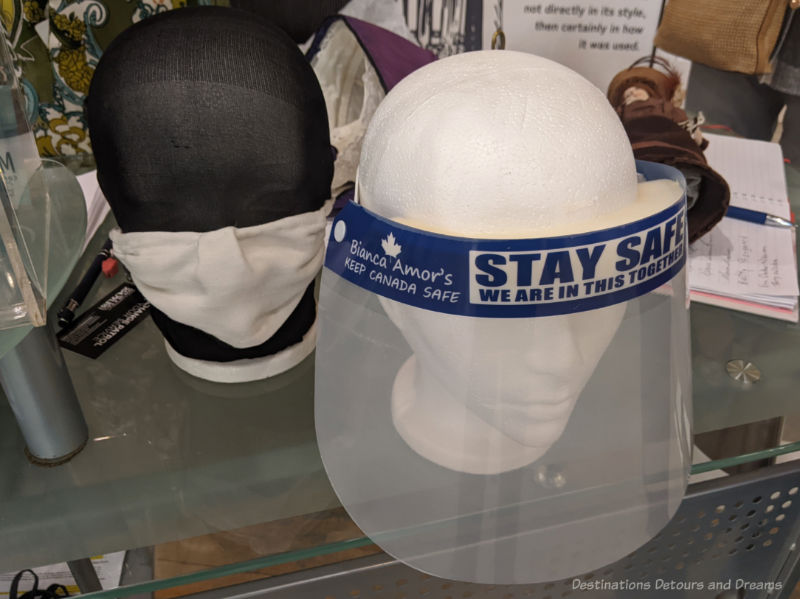
Personal Protective Equipment (PPE) has become a hallmark of COVID-19 with mask mandates occurring around the world. Masking was also a common practice during the influenza pandemic, both in places like Alberta where it was mandated, and in other places where it was left to personal choice.
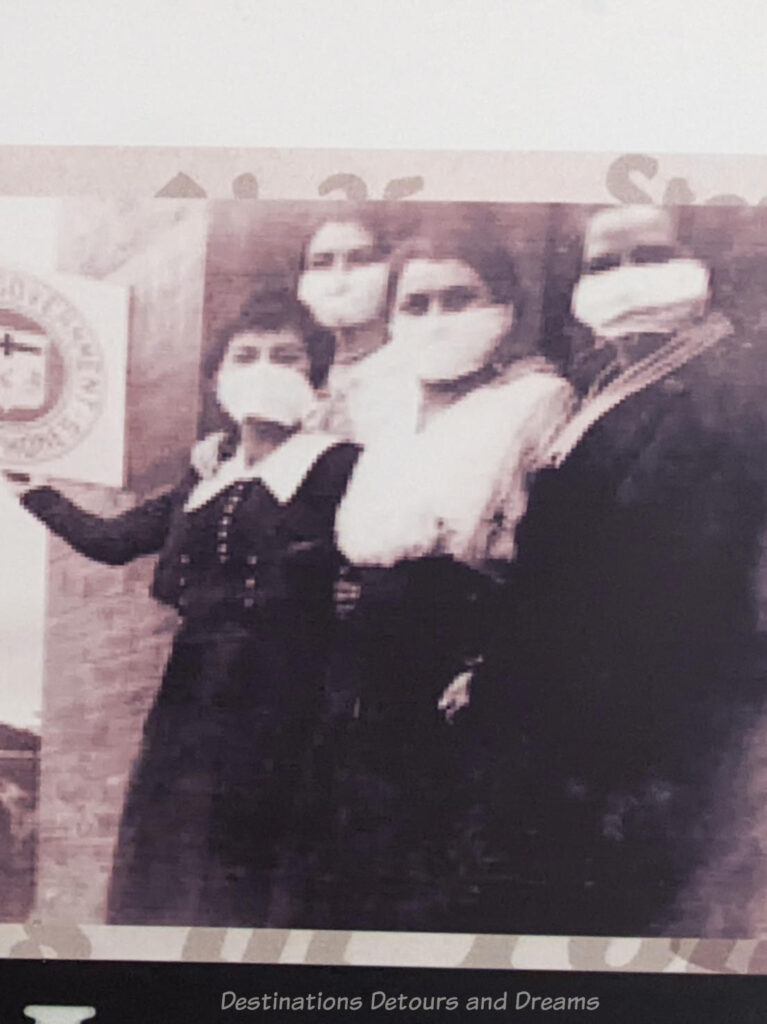
The masks were not the N95s of today. They consisted of 3-4 layers of cotton gauze or cheesecloth doubled over and secured to the face with elastic straps. For extra cleanliness, doctors recommended soaking masks in disinfectants, anything from eucalyptus oil and camphor, to formaldehyde. These masks wouldn’t typically be reused unless one thoroughly boiled them. Most doctors recommended burning masks after use.
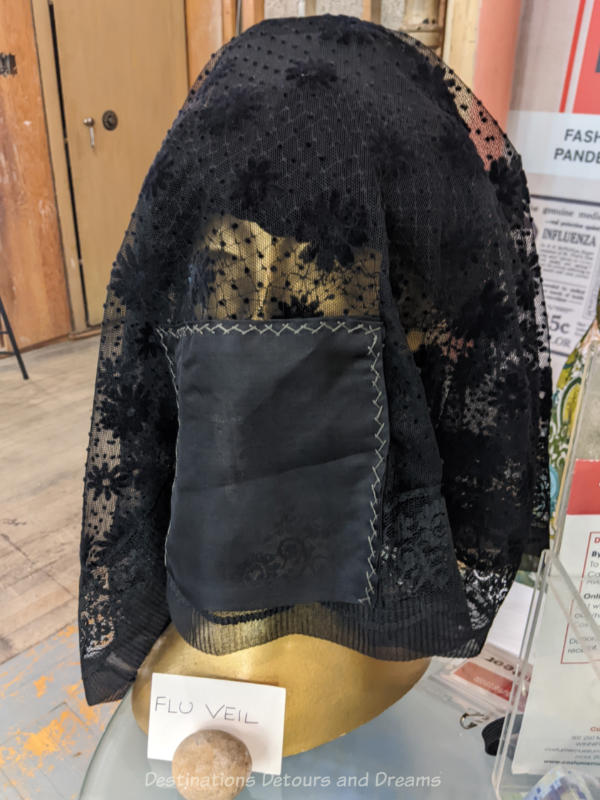
The especially fashionable could opt for the “flu veil” instead of the face mask. It had two different meshes, a finer one at the eyes so the wearer could see, and a thicker mesh near the mouth, potentially with a pocket to add your disinfectant of choice.
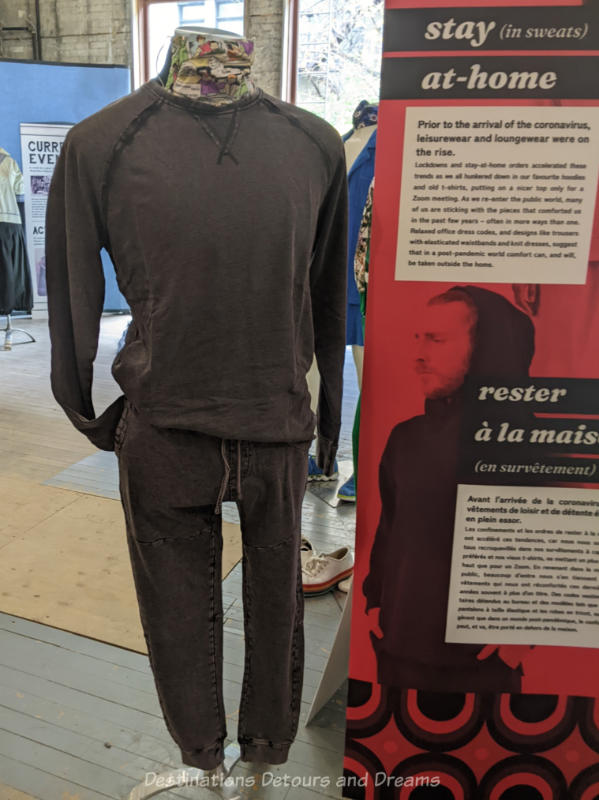
Leisureware and loungewear were on the rise prior to the COVID-19 pandemic. Lockdowns and stay-at-home orders accelerated these trends. As we re-enter the public world, many are sticking to the comfort of these pieces.
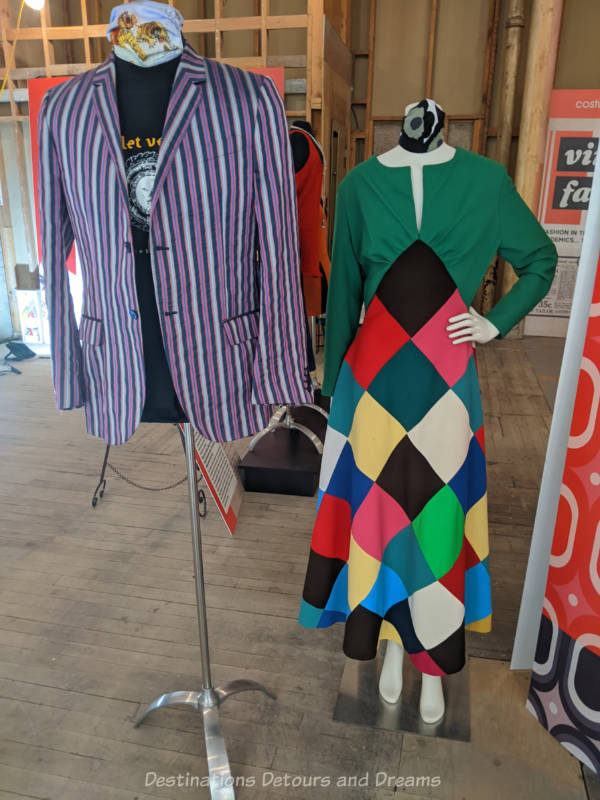
While many of us cocooned in our sweats and pyjamas, the exhibit included information on another trend that is, in may ways, a polar opposite of that. Dopamine dressing refers to the desire to escape the pandemic through clothing and mood-boosting styles with bright colours, funky patterns, and exaggerated silhouettes. While not from the current day (the dress is circa 1970s), the outfits in the above photo illustrate the desire for colour.
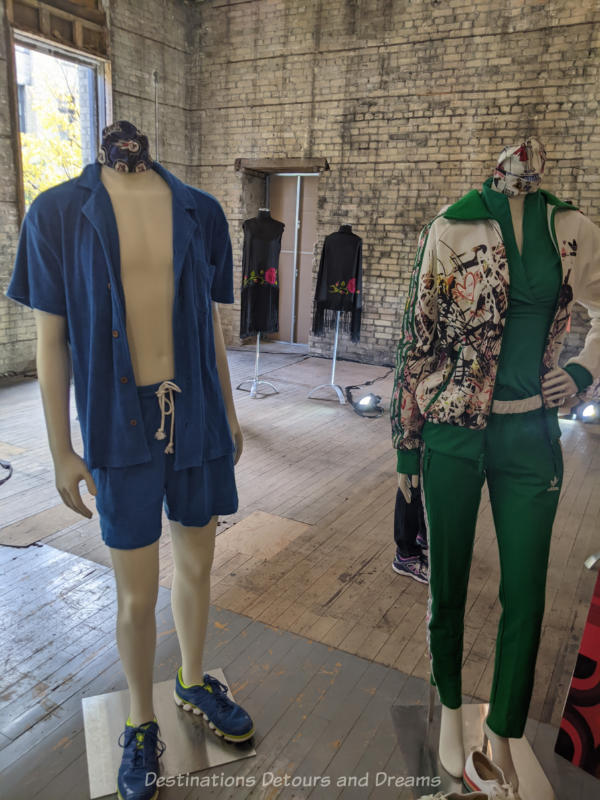
During the COVID-19 pandemic people kept active through at-home workouts or daily walks. Athleisure and sportswear brands increased in value while other clothing brands struggled to say afloat.
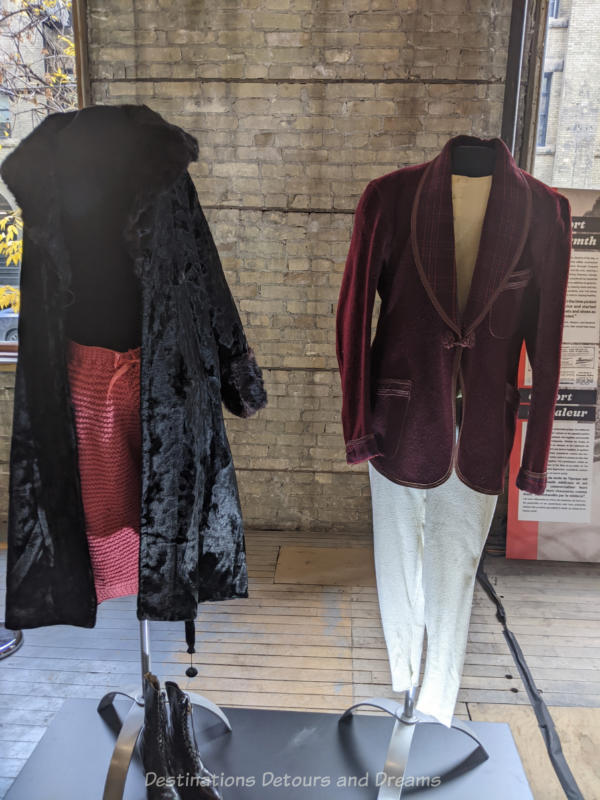
To avoid catching the dread Spanish flu, doctors of the day recommended maintaining personal hygiene through frequent disinfection, avoiding crowds and the sick, wearing a mask, and refraining from spitting. Managing one’s general health was considered a tactic for fending off influenza. Staying warm and dry and keeping in the fresh air and sunshine were considered vital. Fashion retailers started marketing their coats and shoes as “doctor recommended.”
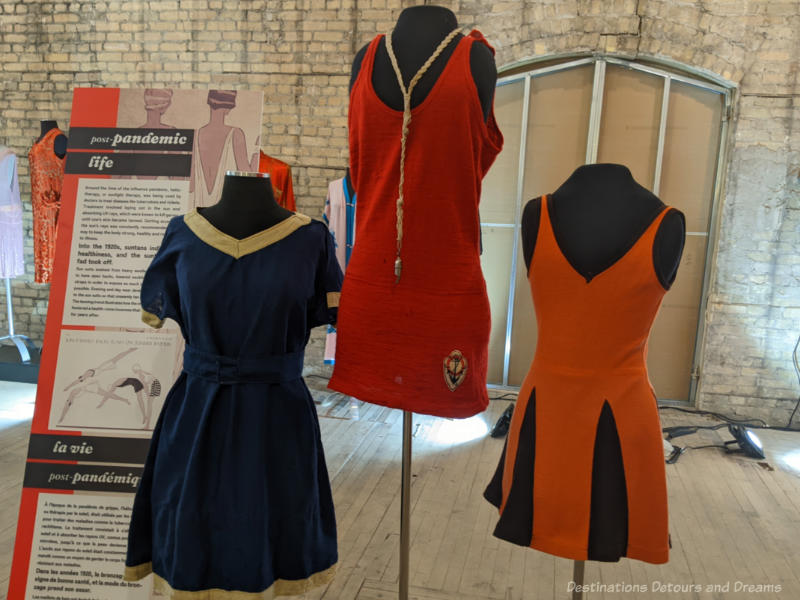
One of the more interesting tidbits I picked up at the exhibit was about the evolution of sun suits. Around the time of the influenza pandemic, heliotherapy, or sunlight therapy, was being used by doctors to treat diseases like tuberculosis and rickets. Treatment involved laying out in the sun and absorbing UV rays, which were known to kill germs, until one’s skin became tanned. Getting access to the sun’s rays was constantly recommended as a way to keep the body strong, healthy, and resistant to illness. Sun tans indicated healthiness into the 1920s and the sun-tanning fad took off. Sun suits evolved from heavy woolen bathing suits to have open backs, lower necklines, and small straps. Evening and day wear developed cuts similar to the sun suits so that unseemly tan lines were hidden.
It is important to note that World War I also had an enormous impact on fashion during the Spanish Flu epidemic. Resources and supply chains had been geared toward production for the war leading to widespread shortage of goods at home. Designs were revitalized to use less fabric. Consumers reused any and all fabric in at-home sewing patterns. Rubber replaced leather on shoe soles. Military inspired garments started appearing to reflect pro-war sentiment. Skirts were shorter due to fabric shortages. In response to the shorter skirts, heels became shorter so less leg was on display.
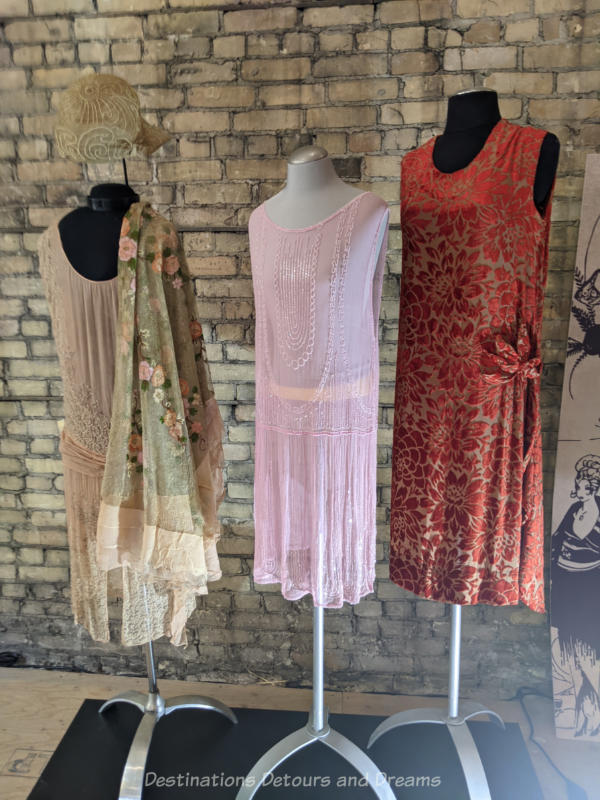
The fun and frivolous styles of the “Roaring Twenties” followed the Spanish Flu pandemic. After so many tragically died so young, both in the pandemic and the First World War before that, fashion reflected a desire to feel youthful and alive. Skirts were shorter. Calves, arms, backs, and clavicles were exposed. Waistlines dropped. Hips and breasts were disguised by a new type of corset that removed the womanly figure.
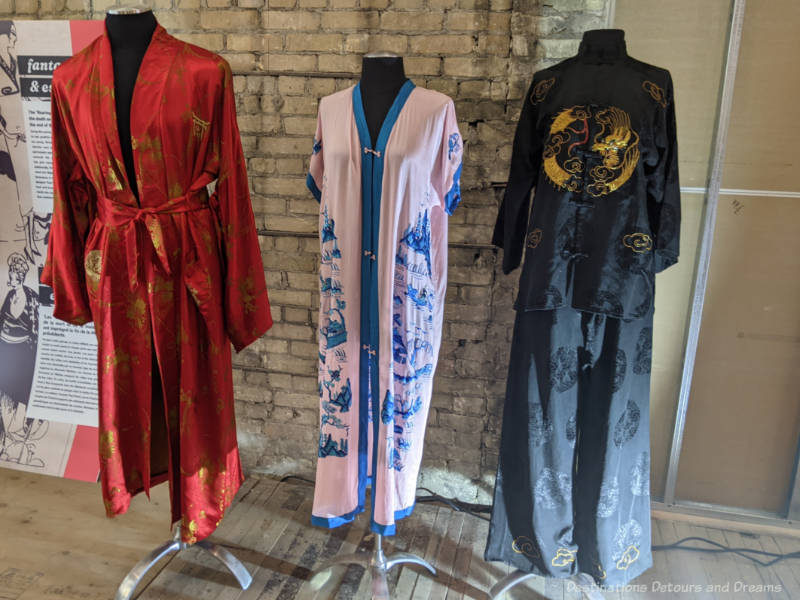
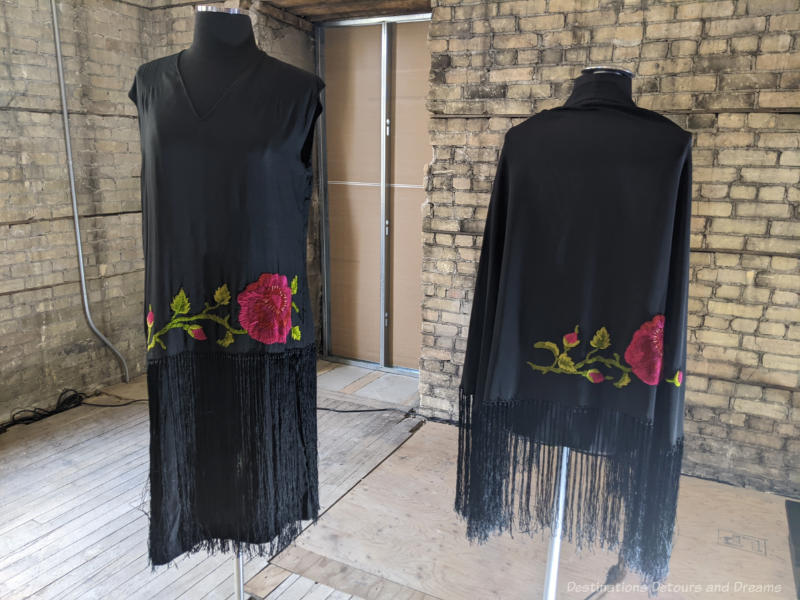
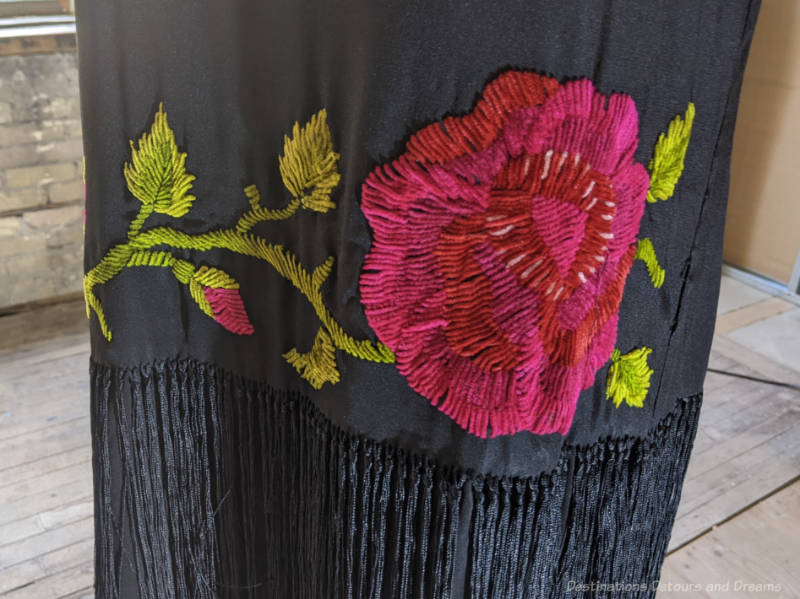
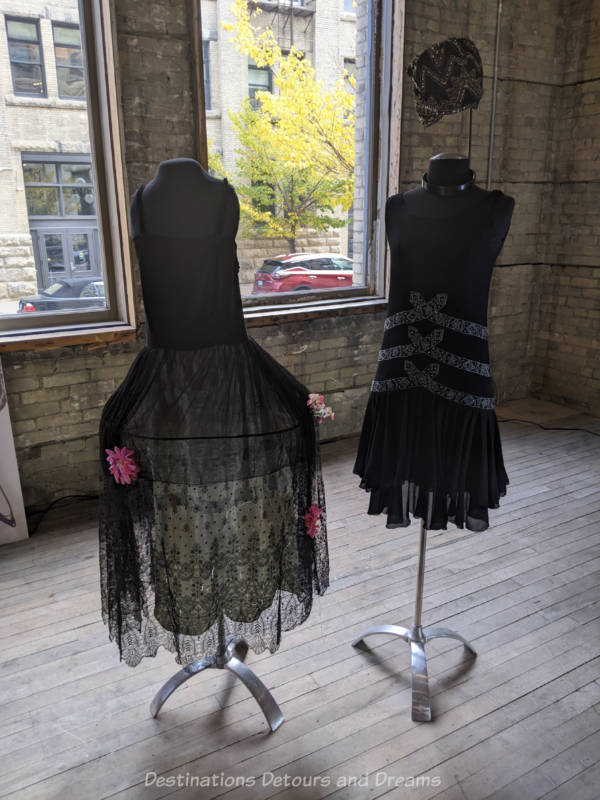
I don’t know whether we’ll see a similar trend toward fun, fantasy, and escapism in fashion in the coming years as we hopefully leave the COVID-19 pandemic behind us. I do know how delighted I was to see a few pieces of pretty colorful clothing in stores this spring after the drabber and plainer clothing of the last two years.
The Viral Fashion exhibit runs Tuesday, Thursday, and Saturday afternoons until October 22, 2022. Visit the Costume Museum of Canada website for more information.
Never miss a story. Sign up for Destinations Detours and Dreams free monthly e-newsletter and receive behind-the-scenes information and sneak peeks ahead.
PIN IT
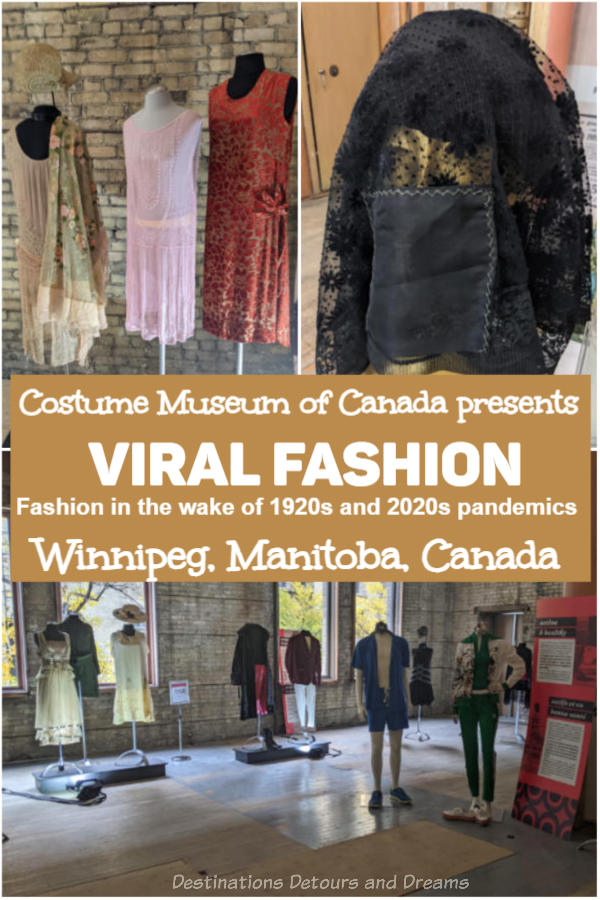

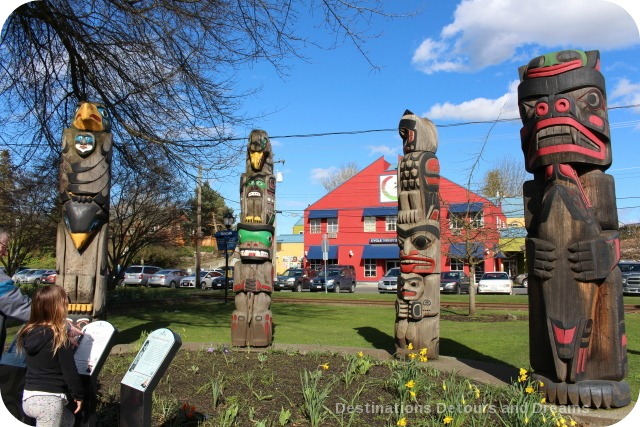


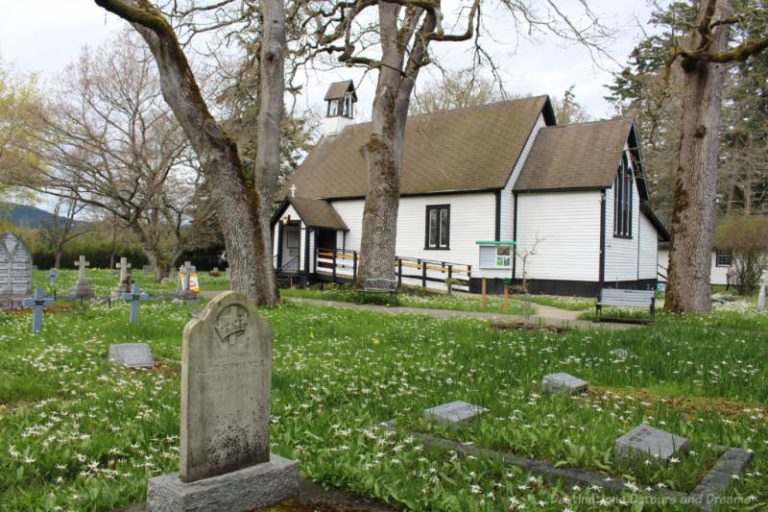
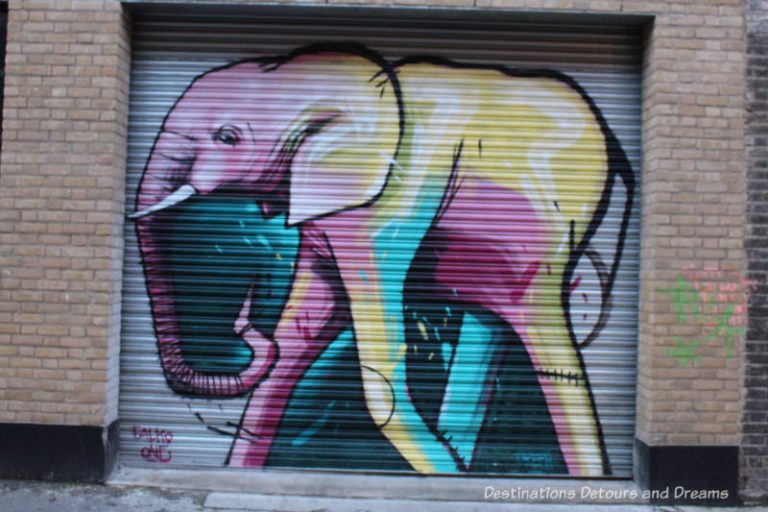

I’m not out of the lounging around in sweats mode just yet. Not usually someone who pays much attention to fashion but I found this a really interesting post.
Thanks Ken. I found the look at fashion from a social history perspective interesting, especially as it included an era we are currently living through.
Great post, Donna. Interesting to see the similarities and differences of the two pandemics when it comes to fashion.
Deb, I also found that comparison interesting. The impact of the 1920s pandemic on fashion was much easier to relate to given our current experience.